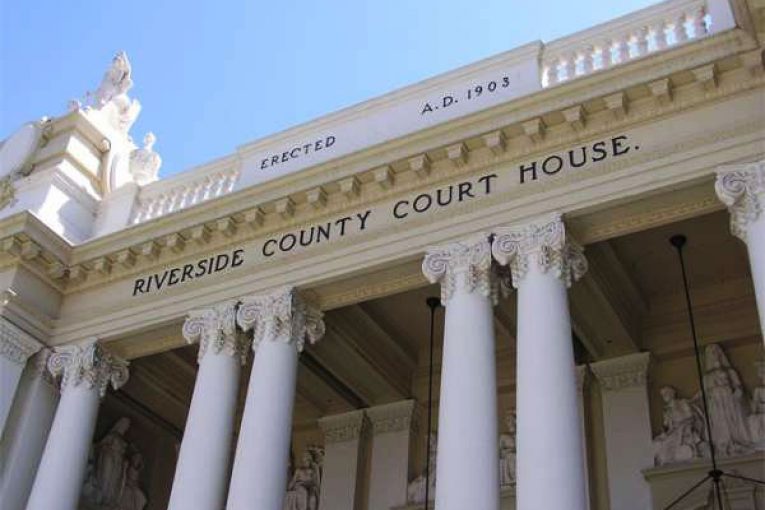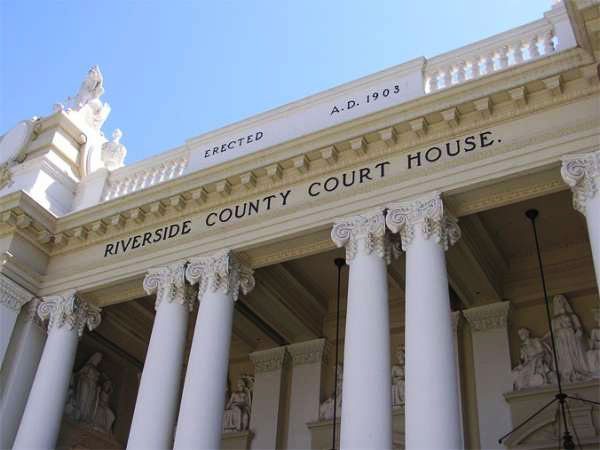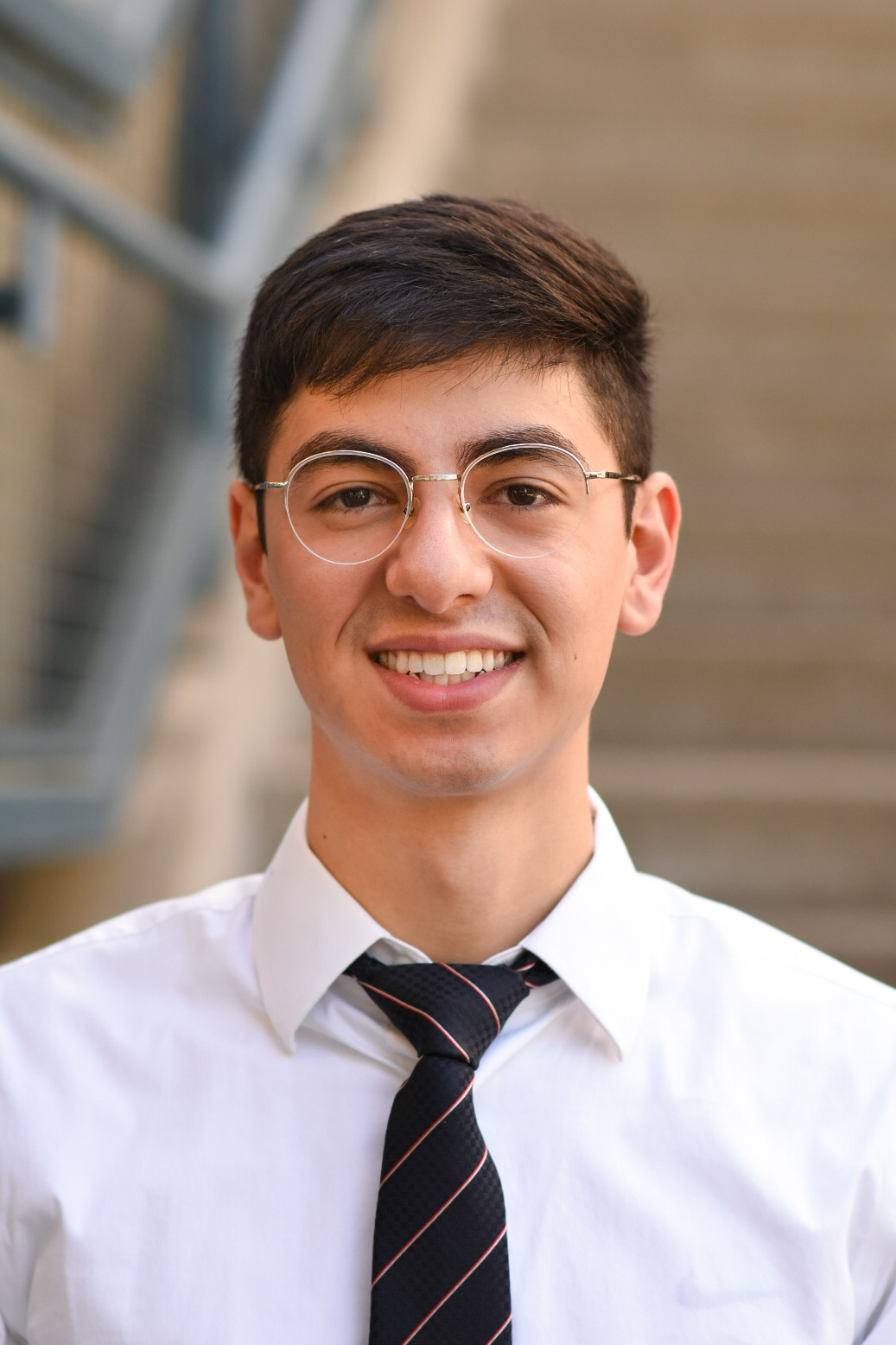

By Ozzy Hernandez, Gabriel Eskandari and Catherine Potente
RIVERSIDE, CA – Lawyers and jurors returned to Riverside Superior Court Department 2H on Wednesday morning for the ongoing and long-running murder trial of Jose Larin-Garcia.
The jury heard testimonies from three expert witnesses who analyzed the evidence in the trial—latent print analyst from the California Department of Justice Corey Schroeder, criminalist from the Department of Justice Gemma Humphreys, and crime scene technician from Palm Springs Police Department Julie Osburn.
Jose Larin-Garcia is accused of murdering four individuals on Feb. 3, 2019. The prosecution is seeking the death penalty, while the defense is aiming for a not guilty verdict or a hung jury.
Schroeder examined the evidence for the case, and cleared up confusion as to why evidence was being analyzed in Fresno County and not Riverside.
“There is no latent print examination at the DOJ Riverside laboratory,” said Schroeder. He said the evidence was transferred to the Fresno laboratory where it is one of three facilities within the state DOJ to examine and compare latent prints. 
The evidence submitted to the DOJ laboratory in Fresno were seven “9mm cartridge cases in taped sealed envelopes,” according to Schroeder. None had appeared to have a latent print, he said.
Upon visual examination, Schroeder said there was no “friction ridge detail,” meaning no fingerprints were visible to the naked eye, so he proceeded to the next method, called cyanoacrylate fuming, which is a fancy word for “Super Glue.” He used this method on all seven casings.
This process can identify latent prints by engulfing the casing cartridges with superglue and then putting it in a heated chamber until it is completely vaporized. Once the vapor settles, a latent print should appear. Schroeder still was unable to identify any.
The third and final method was fluorescent dye stain on the casing after superglue fuming. This would expose fingerprints under a light source, but no latent print was ultimately found. He conducted no further analysis on the casing, he said.
Deputy District Attorney Samantha Paixao pressed Schroeder on what could possibly be the reason for no prints on the casings, and he explained how a finger is able to make an impression on any surface by way of bodily fluids, which he describes as “excreting from the skin of the fingertips” as well as from other skin tissue.
Reasons can vary widely, but Schroeder came to the conclusion that the absence of a latent print in this case was because the bullet casings had been charred when the trigger is pulled, he said.
Defense Attorney John Dolan attempted to weave doubt by questioning and scrutinizing the examination process of the evidence but was met with many objections by the prosecution and Judge Villalobos.
Then, DDA Paixao called on senior criminalist Humphreys from the Department of Justice to testify, and inquired about how one tests for biological fluid on a piece of evidence. Humphreys stated that first she tries to visualize the stain, then uses a chemical test that changes color and occasionally uses a confirmatory test.
DDA Paixao then asked if the process changes depending on the type of evidence. Humphreys said it may change depending on if it is a swab or a piece of clothing or a bed sheet, because the latter two take time to inspect to find stains.
Humphreys said that she was asked to examine items submitted to look for blood. Specifically, she stated she looked at a pair of shoes, a jacket, a swab from hands, swabs from a vehicle, and referenced blood stains from various people.
DDA Paixao then asked if Humphreys recalled the information she was given about the hand swab she received. Humphreys stated that they were swabs of the defendant’s left hand.
Regarding the swabs from the vehicle, Humphreys referred to her notes and then stated that they were taken from the bumper, the rear passenger panel, and the passenger handle.
Humphreys was asked about the report-writing aspect of her job, and she affirmed that she documents the exact item numbers and a description of those items that she analyzes, so people who are reviewing her work can associate it back to specific items.
DDA Paixao asked how many reference samples she received and, based on her report, Humphreys stated she received reference samples for suspect Jose Larin-Garcia, and murder victims Carlos Campos Rivera, Jacob Montgomery, Juan Duarte Raya, and Yuliana Garcia.
A swab from Larin-Garcia’s hand was taken and broken down into a smaller sample, and Humphreys stated, “I examined the item, saw stains, red-brown stains at the visual appearance of blood, they tested positive, and I don’t know if I ever said this yet, but when we have stains with the visual appearance of blood and they test positive, we draw a conclusion that apparent blood was detected.”
Due to the test being a presumptive test, Humphreys referred to the stains as “apparent blood” and did not declare the stains as “blood” due to there being other possible factors that could cause a false positive.
A portion of the swab taken from the exterior bumper of the car, the exterior passenger side, and the door handle tested positive for apparent blood.
According to Humphreys, a collection of a portion differs from a collection of a swab. Humphreys took a swab and swabbed apparent blood off the jacket and shoes, but cut directly into the submitted items to collect a portion. The item’s material determines which method is used.
During the cross-examination, Humphreys was asked about transfer stains and touch DNA. She explained that touch DNA occurs when someone touches a surface and leaves skin cells behind. DNA detected by swabbing would be from touch DNA.
She was asked if she received any other evidence, such as a cigarette butt, swabs from the victims’ clothing, or swabs from other interior places in the car, besides the door handle, but she did not.
After the break, court proceedings began with a direct examination of witness Osburn, the crime scene technician at the Palm Springs Police Department. Osburn’s job includes photographing the crime scene as it is, collecting evidence for the crime lab, and processing evidence.
Osburn responded to a call from her sergeant on Feb. 4, 2019, at the site of the collision around the area of Sunny Dunes. Osburn reported to the Palm Springs Police Department to gather her equipment but was instructed to remain on standby at the police department, instead of the crime scene.
Osburn was then instructed to process a car, unrelated to the crime, which was located in the crime lab driveway. This cleared that driveway for the victim’s car.
The victim’s car was towed around noon to the crime lab driveway. Osburn began processing the car then. DDA Paixao asked Osburn what she observed from the car.
“I remember thinking that it was exceptionally bloody. There was blood outside; there was blood inside. Some of it was still damp. There were many personal items inside the vehicle and a lot of staining. There was damage to the vehicle on the outside. It looked like it had sustained damage from a collision on the front driver’s side and on the rear passenger’s side corners of the vehicle,” Osburn stated.
According to Osburn, the airbags were bloody and had been deployed. There was blood on the rear passenger side window and the front windows were broken.
Osburn photographed the victim’s car as she saw it, before anything was touched. The photographs presented in court depicted what Osburn saw as she processed the vehicle.
While looking at the photographs, Osburn said, “I see quite a bit of blood on the passenger seat, the driver facing side. The back of the driver’s seat, toward the right shoulder, has apparent blood. The seat has apparent blood, there’s blood, apparent blood, on the air bag, the driver’s side airbag, and I also see some on the front passenger seat.”
Osburn collected two cartridge casings under the front passenger side seat, assigned them separate numbers, and placed them into separate envelopes.
A detective requested one of the two casings to be rushed to a database and be entered in as soon as possible. Because Osburn was not at the lab during that time, the detective asked the lieutenant detective for lab access. One casing was obtained and a new number assignment was printed for that casing. The new label was not under Osburn’s identification number.
DDA Paixao continued to show Osburn photographs of the interior of the vehicle and asked her to describe what she observed.
Osburn stated that she saw apparent blood and the items that she collected as evidence in the car. The victims’ bodies had been removed before she processed the car. Therefore, she never saw the placement of the bodies.
DDA Paixao presented Osburn with a photograph taken of the rear interior door on the driver’s side. The door had a hole in it, which Osburn had documented on Feb. 4, 2019, but did not look to see if there was anything on the other side of the hole.
On Nov. 17, 2021, Osburn said she returned to the city yard and looked at the vehicle again.
“I received a phone call from Officer Castle and he said that the defense team wanted to take a look at it and were asking me to photograph what they were looking for,” Osburn stated.
According to Osburn, one of the crime scene investigators opened the rear passenger door to see what was behind the hole. A bullet was retrieved from the interior of the door.
Osburn stated that she took the bullet to the lab, photographed it, assigned it an item number, and booked it into evidence.
Osburn mentioned she forgot to recover the bullet in Feb. 2019 after a blood spatter expert examined the vehicle.
“I could not remove the door at that time because it’s very important to see a bloodstain pattern expert during his or her analysis to see the blood on all of the evidence. And in this case it would’ve been the evidence in the car,” Osburn stated.
Osburn added, “When the blood pattern expert was through, I simply forgot to remove the bullet from the door.”
After collecting the bullet, Osburn realized there was another bullet still in the car.
A few weeks ago, Osburn prepared for her testimony. To prepare, Osburn said, “I was reviewing my photographs. I was reviewing all my different supplemental reports and I had commented on what appeared to be a bullet inside of the cover of the front passenger side airbag that Officer Castle had seen. I looked through all my evidence, I went number by number and I did not see the bullet from that area booked into evidence.”
Osburn then stated she returned to the city yard and to the same vehicle she visited on Nov. 17, 2021. She saw a copper item in the hole, where it was first seen. Osburn returned again with the detective sergeant to photograph and collect it.
The court proceedings for the day ended with DDA Paixao asking Osburn about her procedure when processing fingerprints and asked Osburn to direct her attention to a series of photographs.






